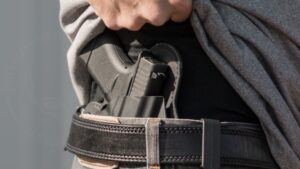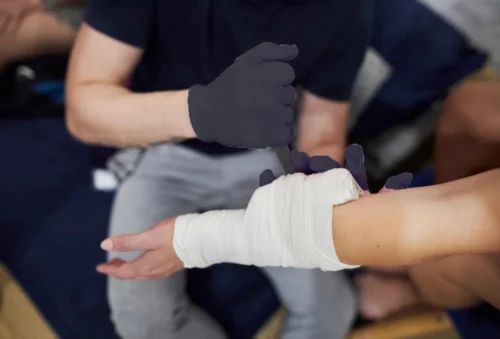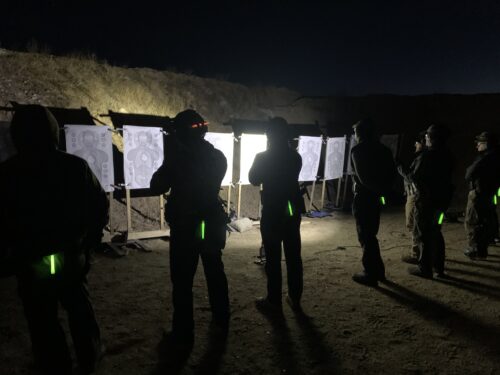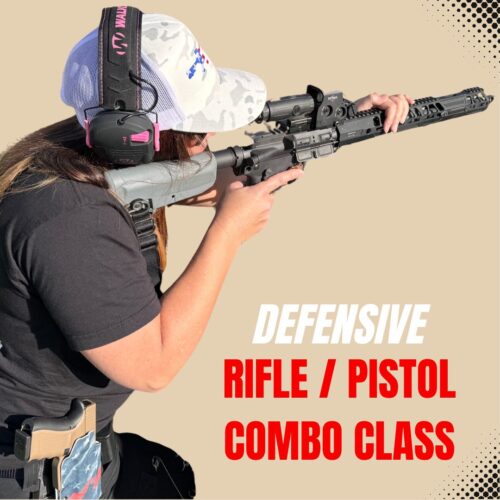
Saturday April 26th 9AM-12:30PM
This concealed carry handgun class will focus on learning to draw and fight with a handgun from positions of concealment and is a dynamic and highly practical training experience. The class will aim to teach students not just the basics of firearm safety and handling, but also how to efficiently and effectively draw from concealed carry positions in real-world scenarios. The class will cover many if not all of the following points.
In order to enroll for this class you must have completed both the Fundamental and the Defensive Handgun classes.
1. Classroom Instruction:
- Safety Protocols: Emphasis on the 4 basic rules of firearm safety, especially considering the close proximity of others during training.
- Legal Considerations: Discussing the legalities of concealed carry, including when and how to use deadly force.
- Types of Concealed Carry Holsters: Overview of d
ifferent carry methods (IWB, OWB, appendix carry, ankle carry, etc.) and how they influence draw techniques. - Mindset & Situational Awareness: Emphasis on the mental aspects of concealed carry—when to draw, how to stay aware of surroundings, and what actions to take in a high-stress encounter.
2. Warm-Up Drills:
- Body Positioning and Balance: Before drawing, students practice basic stances and body positioning to ensure stability during a draw.
- Fundamentals of Marksmanship: Ensuring that students have a proper, stance, grip, sight alignment, trigger press and follow thru.
- Slow, Methodical Drawing: Starting from standing positions with a concealed firearm, students will begin with slow, deliberate draws, focusing on proper technique and body mechanics.
3. Drawing From Concealment:
- The Draw Stroke: Training students on how to draw the firearm from various concealed positions, including:
- IWB (Inside the Waistband): Drawing from under a shirt, jacket, or waistband.
- Appendix Carry: Reaching for the firearm positioned at the front of the body.
- OWB (Outside the Waistband): Drawing from an exposed position covered by a jacket or shirt.
- Speed and Smoothness: Progressing from slow to faster draws, emphasizing smoothness and accuracy under time pressure.
- Dry Fire Practice: Using empty or dummy rounds to rehearse the draw process and sight alignment without the risk of live fire.
4. Draw Under Stress:
- Moving and Drawing: Students practice drawing while on the move, learning to integrate footwork with the draw process. This prepares them for situations where they may need to retreat or advance while accessing their firearm.
- Time-Pressured Drills: Introducing timed drills to help students increase their speed and accuracy under stress.
5. Fighting with the Handgun:
- Close-Quarters Engagement: Students learn how to use their handgun at close distances, including retention shooting, where they may need to fire while the gun is close to the holster or extremely close to the threat.
- Retaining the Weapon: Practicing keeping the firearm secure in situations where an attacker might try to disarm them, using techniques such as the “high retention” position or pushing away the attacker.
- Shooting From Various Angles: Drawing and shooting from different body positions, such as sitting, kneeling, or lying on the ground. This teaches how to stay prepared to fight regardless of body orientation.
- Movement and Shooting: Drills that combine drawing, shooting, and moving, teaching students to maintain control and continue engaging while moving.
6. Scenario-Based Training:
- Simulated Threats: Students are placed in simulated scenarios where they must react to a potential threat. These scenarios are designed to mimic real-world situations such as:
- An armed assailant approaching.
- A surprise attack at a close distance.
- A multiple attacker situation.
- Aftermath Management: Emphasis on what to do immediately after drawing and firing, including how to ensure safety, retreat, or secure the area until law enforcement arrives.




